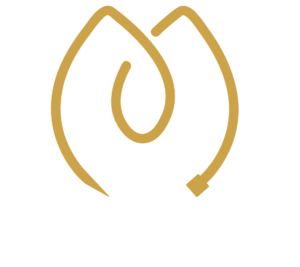Uterine Fibroid Embolisation vs. Myomectomy: Key Differences
When looking at uterine fibroid embolisation vs. myomectomy, the main difference lies in the method. One is slightly more complex, possibly involving a surgical procedure while the other is minimally invasive. This article describes them both in detail.
Uterine Fibroid Embolisation vs. Myomectomy: What Sets Them Apart
Uterine Fibroid Embolisation vs. Myomectomy: How Each Procedure Works
Myomectomy removes fibroids directly from the uterus, either through surgery or minimally invasive techniques. This can be done by making a larger cut in the abdomen (abdominal myomectomy), using small incisions and a camera (laparoscopic myomectomy), or by going through the cervix with a thin scope (hysteroscopic myomectomy).
In contrast, uterine fibroid embolisation avoids surgery altogether. A small tube is inserted, usually through the groin, and tiny particles are released to block the blood flow to the fibroids. This causes them to shrink over time and eases symptoms like heavy bleeding and pelvic pressure.
Uterine Fibroid Embolisation vs. Myomectomy: Invasiveness and Recovery Time
Comparing uterine fibroid embolisation vs. myomectomy in terms of recovery, the less invasive option is clear. UFE doesn’t require stitches or large cuts, which appeals to many people who want to skip hospital stays and get back to daily life sooner. Most people feel ready to return to regular activities within a couple of weeks.
Myomectomy comes with more downtime, especially the abdominal type, which is full surgery and may need weeks of healing. Even laparoscopic or hysteroscopic approaches, though less invasive, usually need more recovery time than UFE.
Considering Symptoms and Patient Goals with Uterine Fibroid Embolisation vs. Myomectomy
Symptoms and life plans often help guide the decision between uterine fibroid embolisation vs. myomectomy. UFE tends to work better for reducing heavy bleeding and painful cramps. On the other hand, myomectomy might be more effective for people dealing with pressure or bulk symptoms caused by larger fibroids.
If having children in the future is a strong goal, doctors might lean toward recommending myomectomy. That’s because it removes the fibroids while preserving more of the uterus’s natural structure. UFE may still be an option, but it’s something to review carefully, since it may affect certain factors like uterine lining or hormone supply.
When sorting through the options of uterine fibroid embolisation vs. myomectomy, it all comes down to what fits your health needs and lifestyle. A personalised plan can make all the difference when managing fibroids in a way that supports both comfort and long-term goals.
Uterine Fibroid Embolisation vs. Myomectomy: Recovery Time and Comfort
When weighing uterine fibroid embolisation vs. myomectomy, how long it takes to bounce back is often one of the most important factors. Getting back to everyday life with minimal disruption is a top priority for many. Uterine fibroid embolisation, or UFE, tends to offer a smoother and faster recovery overall. Most women start feeling better within two weeks, and common side effects like cramping or fatigue fade quickly. Since UFE is a non-surgical method, there’s no need for stitches, wound care, or long hospital stays.
In contrast, myomectomy is surgery, and recovery depends on what kind. An abdominal myomectomy often means several weeks off your feet. Even with less invasive versions like laparoscopy or hysteroscopy, there’s still more downtime. Pain levels are another key difference. Those who choose UFE usually need pain relief for under a week. Myomectomy patients, especially those undergoing open surgery, often rely on stronger medications for around nine days.
Uterine Fibroid Embolisation vs. Myomectomy: Hospital Stay and Risks
Comparing uterine fibroid embolisation vs. myomectomy also means looking at time spent in the hospital and potential risks. UFE is typically done as an outpatient procedure, you can usually go home the same day. Myomectomy, however, often leads to a longer stay. On average, you might expect up to three days in the hospital after surgery.
UFE tends to carry fewer risks when it comes to complications. Only about 11% of patients experience issues, which is notably lower than the 25% complication rate seen with abdominal myomectomy. These differences make UFE a more appealing option for those who want to avoid surgical recovery and reduce chances of post-procedure problems.
Uterine Fibroid Embolisation vs. Myomectomy: Lifestyle Fit and Healing Goals
Choosing between uterine fibroid embolisation vs. myomectomy is about the procedure and what fits best into your life. If your goal is to recover quickly, minimise pain, and avoid a hospital stay, UFE might be the better match. This approach can make the healing journey less stressful and more manageable, especially for those balancing work, family, or other responsibilities. Myomectomy, while effective for certain symptoms, may come with heavier recovery demands but may be preferred by patients with specific fertility goals.
Ultimately, the decision should take into account personal health needs, daily life demands, and future plans. Discussing the pros and cons of uterine fibroid embolisation vs. myomectomy with your care team is a helpful next step to find the path that works best for you.
Comparing Fertility Outcomes: Uterine Fibroid Embolisation vs. Myomectomy
One of the biggest considerations when weighing uterine fibroid embolisation vs. myomectomy is future pregnancy. Myomectomy has long been considered the preferred option for people hoping to conceive, as it removes fibroids directly while maintaining the structure of the uterus. By clearing the uterine wall of fibroids, it may improve the chances of natural conception in some individuals.
However, uterine fibroid embolisation isn’t ruled out for those planning a family. Some women have successfully become pregnant after the procedure, with studies showing post-UFE pregnancy rates around 58%. It’s important to know, though, that UFE could carry a higher risk of affecting the uterus or ovaries. That’s why healthcare providers usually take a careful look at reproductive goals before recommending this route.
Symptom Relief: Uterine Fibroid Embolisation vs. Myomectomy
For people dealing with daily discomfort, symptom control plays a major role in decision-making. When evaluating uterine fibroid embolisation vs. myomectomy, UFE has been shown to relieve heavy bleeding more effectively, up to 92% of patients see improvement compared to 64% after abdominal myomectomy. When it comes to pelvic pain, both procedures provide similar relief.
Pressure symptoms like bloating or frequent urination can vary. Myomectomy appears to offer higher success in this area, with 91% of patients reporting relief, compared to 76% with UFE. So the right option might depend on which symptoms are most disruptive to your routine.
Uterine Fibroid Embolisation vs. Myomectomy: What About the Long-Term?
It’s also important to think about the long game when deciding between uterine fibroid embolisation vs. myomectomy. In some cases, fibroids can come back or new ones can develop after UFE, making repeat procedures more likely. Myomectomy, especially when performed by an experienced surgeon, has a lower chance of needing follow-up treatment.
Still, that doesn’t mean UFE isn’t a good option, it offers a shorter recovery and fewer complications overall. But if future pregnancy and long-term surgery-free outcomes matter most, reviewing both choices closely with your care team will help shape the best plan for you.
Conclusion: Take the Next Step in Managing Uterine Fibroids
Navigating the decision between uterine fibroid embolisation and myomectomy requires a nuanced understanding of your personal health goals and lifestyle needs. Making an informed choice is critical, whether you’re prioritising a swift recovery, effective symptom relief, or future fertility options. At Minima Radiology, our experts are ready to guide you through your options and support your journey towards optimal health. Let’s tailor a treatment plan that aligns with your unique needs and aspirations. Contact us today to schedule a consultation and start the conversation.





Leave a Reply
Want to join the discussion?Feel free to contribute!